Present Market Trends in SSAW Pipe Exports
The global SSAW pipe market has experienced notable growth in recent years, supported by booming infrastructure development, oil and gas exploration, and the rising need for large-diameter steel pipelines worldwide. SSAW (Spiral Submerged Arc Welded) pipes are widely used for water transmission, piling, structural foundations, and energy projects due to their strength, cost-efficiency, and ability to be manufactured in larger diameters than other welded pipes. Current steel pipe export trends show a dynamic shift in production hubs, pricing structures, and demand regions that are reshaping the industry.
1. Rising Demand from Infrastructure Projects
Infrastructure remains the biggest driver of SSAW pipe exports. Major economies are investing heavily in:
- Water supply pipelines
- City drainage and sewage networks
- Cross-border oil and gas transmission lines
- Port and coastal piling projects
Such large-scale projects require heavy-duty pipes, fueling higher demand for SSAW pipes. This surge has significantly increased export volumes from Asia to Africa, the Middle East, and Latin America, where infrastructure development is accelerating. The infrastructure development demand is expected to keep pushing order volumes up in the coming years.
2. Shift in Manufacturing and Export Hubs
Traditionally, SSAW pipe production was concentrated in North America and Europe. However, the global SSAW pipe market is now dominated by Asian manufacturers, especially China and India. Reasons for this shift include:
- Lower raw material and labor costs
- Large-scale, automated manufacturing facilities
- Proximity to major steel coil producers
This competitive cost structure allows Asian exporters to offer more attractive pricing, expanding their presence in international tenders.
3. Fluctuating Steel Prices Impacting Exports
Steel coil, the main raw material for SSAW pipes, is subject to price fluctuations that directly influence export competitiveness. When steel prices rise sharply, export prices also climb, potentially reducing demand from cost-sensitive markets. Conversely, falling steel prices can trigger export surges as buyers stock up at lower rates. Managing this volatility is crucial for exporters navigating steel pipe export trends.
4. Regulatory and Quality Standards
Exporting SSAW pipes requires compliance with international quality and safety certifications like API 5L, ASTM, and ISO standards. Many importing countries have tightened their inspection and documentation procedures. Exporters with advanced testing labs, full traceability, and third-party certifications have a competitive edge. This growing emphasis on quality assurance is reshaping how companies position themselves in the global SSAW pipe market.
5. Logistics and Shipping Challenges
Global shipping costs, container availability, and port congestion continue to affect export timelines and profitability. SSAW pipes are large and heavy, requiring specialized handling and space, which further increases transportation costs. Companies are increasingly exploring bulk charter shipments and regional stockyards to reduce delivery lead times and improve their competitiveness.
Conclusion
The SSAW pipe industry is undergoing a period of rapid change. Driven by infrastructure development demand, supported by cost-efficient Asian manufacturing, and shaped by evolving steel pipe export trends, the global SSAW pipe market is set for steady growth. Exporters that embrace quality assurance, build strong logistics networks, and remain agile in pricing strategies will be best positioned to succeed as international demand continues to rise.










